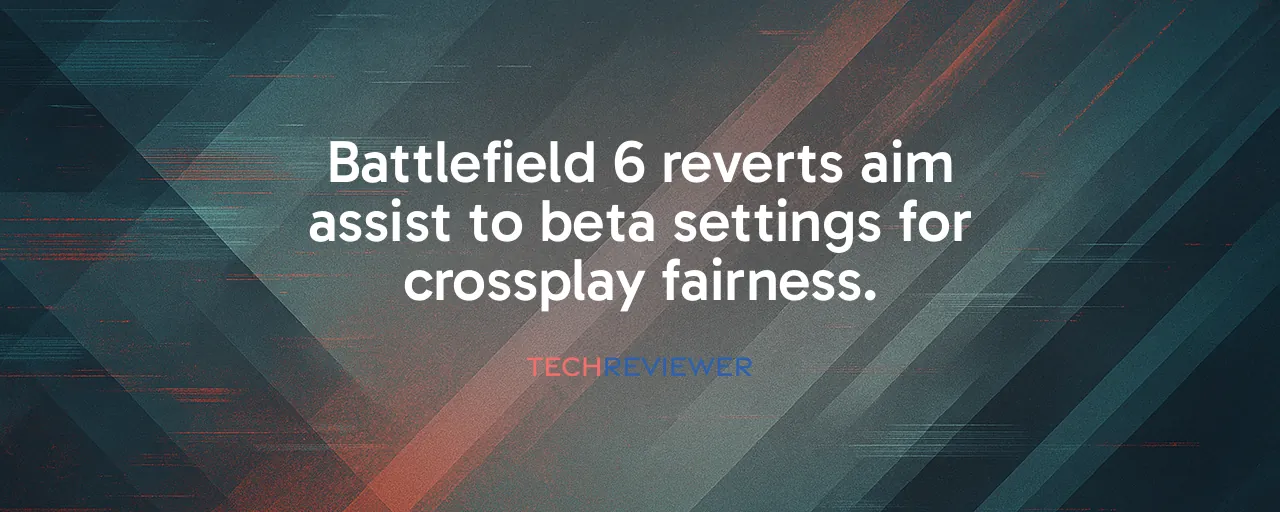The Aim Assist Uproar in Battlefield 6
A month after Battlefield 6's October 2025 launch, players are still caught in heated crossplay battles where a single feature steals the spotlight: aim assist. Console players love its help in tracking enemies during chaotic firefights, but PC players using keyboards and mice cry foul, claiming it gives controllers an unfair edge. On November 4, 2025, Matthew Nickerson, the game's console and controller design lead at DICE, announced on X that the team would revert aim assist to its open beta settings, addressing a storm of community feedback. The decision highlights a deeper challenge in modern shooters: balancing accessibility for casual players with fairness for competitive ones.
The retail version's aim assist, with its sticky targeting and rotational pull, sparked complaints for feeling too aggressive. Players described moments where their crosshair seemed to fight their input, locking onto the wrong enemy in crowded fights. The open beta, by contrast, offered a lighter touch, with less stickiness and smoother tracking. Nickerson's promise to roll back these changes aims to restore that balance, ensuring the system guides players without hijacking their skill.
Why Aim Assist Sparks Debate
Aim assist exists to bridge the gap between controllers and keyboards. Console players, making up roughly 40-50% of shooter audiences, rely on it to compete with the pinpoint precision of mouse inputs. Yet, the retail version's rotational aim assist, which subtly pulls the crosshair toward targets, frustrated PC players in close-quarters combat. They felt outgunned in tight spaces, where controllers gained a 25% recoil reduction advantage, a separate system that amplified perceptions of imbalance. Console players, meanwhile, had mixed reactions: some welcomed the extra help, while others found it disrupted their aim in multi-target chaos.
The stakes extend beyond casual play. Esports professionals, who stream and compete across platforms, demand consistent mechanics to hone their skills. A system that feels too automated risks undermining the skill expression that defines competitive gaming. Nickerson's team at DICE aims to deliver what he calls 'humanized aim assist,' where the system supports players without overshadowing their input. The reversion to open beta settings, with their uniform slowdown and minimal rotational pull, reflects a commitment to this philosophy.
Lessons From Call of Duty and Halo
Battlefield 6 isn't alone in wrestling with aim assist. Call of Duty's approach leans heavily on rotational aim assist, offering near-guaranteed accuracy when players hold their aim, a design that fuels debates about whether it diminishes skill. Professional players in that community often argue it makes controller play too forgiving, especially in crossplay matches. Halo, by contrast, opts for minimal aim assist, prioritizing raw skill but creating a steeper learning curve for casual players. This trade-off boosts its esports appeal while alienating some newcomers.
Destiny 2 offers a compelling middle ground. Its extensive customization lets players tweak aim assist strength, catering to both casual and competitive audiences. Battlefield 6 could learn from this, potentially offering sliders to adjust assist levels, letting players choose between accessibility and precision. These case studies reveal a core lesson: no single setting satisfies everyone. DICE's choice to revert to open beta mechanics suggests a pragmatic focus on what worked best during testing, but it also highlights the need for flexibility to keep diverse players engaged.
Balancing Act for Crossplay Fairness
Crossplay, now a staple in shooters, forces developers to confront input disparities head-on. Battlefield 6's hit detection system ensures smoother accuracy across complex maps. Yet, even advanced tech can't erase the inherent differences between controllers and keyboards. The open beta settings, praised for their consistent slowdown, aim to level the playing field by reducing the sticky pull that frustrated players. Importantly, Nickerson confirmed that existing player settings won't reset, sparing veterans the hassle of recalibrating.
Still, challenges remain. Network latency can make aim assist feel inconsistent, especially in regions with spotty connections. Esports organizers, eyeing standardized mechanics for tournaments, may push for input-based matchmaking to sidestep balance debates. For now, DICE's swift response to feedback signals a commitment to keeping players in the fight, whether they're casual console users or competitive PC sharpshooters.
What Lies Ahead for Battlefield 6
The aim assist reversion is just one piece of Battlefield 6's evolving puzzle. With the REDSEC battle royale mode live and casual modes featuring 32 bots, DICE is juggling multiple updates to keep the community thriving. Looking forward, incremental tweaks to aim assist are likely, with quarterly patches refining the balance based on player data. The rise of mobile gaming, where automated targeting is common, might push expectations for stronger aim assist, but DICE seems focused on preserving skill-driven play.
Longer term, innovations like adaptive aim assist, powered by AI to tailor support to player skill, could reshape the debate. For now, the return to open beta settings offers a tested foundation to build on, aiming to unite console and PC players in fairer, more thrilling battles. As crossplay shooters continue to dominate, Battlefield 6's adjustments set a precedent for how developers can listen, adapt, and keep the community at the heart of the game.
